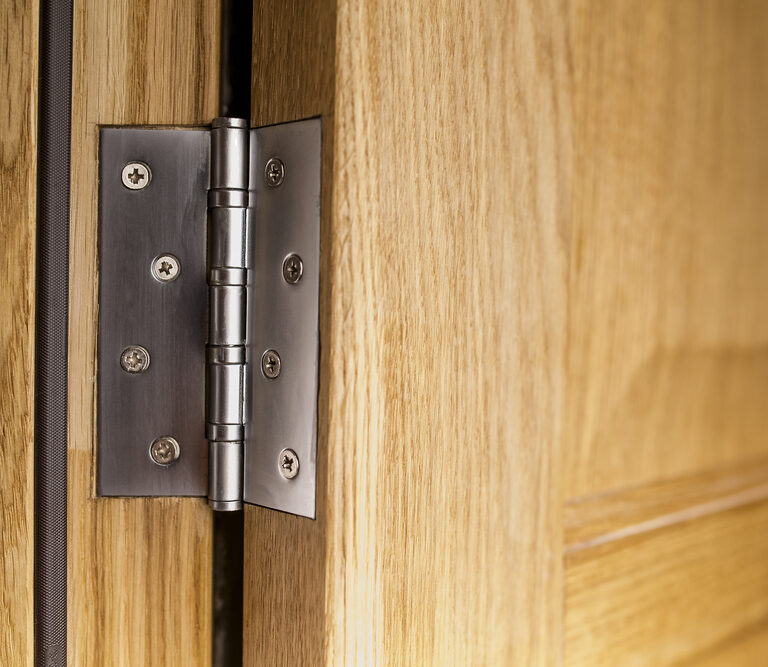If you think about it, it’s kind of amazing how much we take hinges for granted, considering how incredibly vital they are in our day-to-day lives. Anything that requires doors will have hinges, and without them, it will be much harder to pass through and store things, to say the least.
But when you become a DIY-er or a woodworker, you’ll realize just how important hinges are. Not only that, but you’ll also realize the sheer breadth and scope of the topic.
Simply put, there are various types of hinges out there, of all shapes and sizes, designed for one particular use or another. So, if you have a project that will require the use of a door, you need to pick precisely the right kind of hinge to go with it–something that’s easier said than done.
In this article, you’ll find the most common types of hinges around, as well as their main uses.
What Are Hinges?
Hinges are tiny, jointed devices that allow lids, doors, or any other movable parts of an item or furniture to swing. The use of hinges dates far back into history, with evidence saying that it’s been used for at least 5000 years.
Today, hinges are so common that they’re rarely thought about unless you happen to be fixing a cabinet door or creating a DIY closet.
There are many different kinds of hinges beyond what we usually see in a typical home. If you’re planning to create something that needs a door or anything that swings inside or outside your house, then it’s important to know which type of hinge suits is best.
Types of Exterior Hinges
Exterior hinges are hinges that can be used outside the home. They are usually sturdier and bulkier, able to withstand the wear and tear of daily use and the elements. Exterior hinges can be made even sturdier by applying a strong protective coating.
1. Weld-On Barrel Hinge
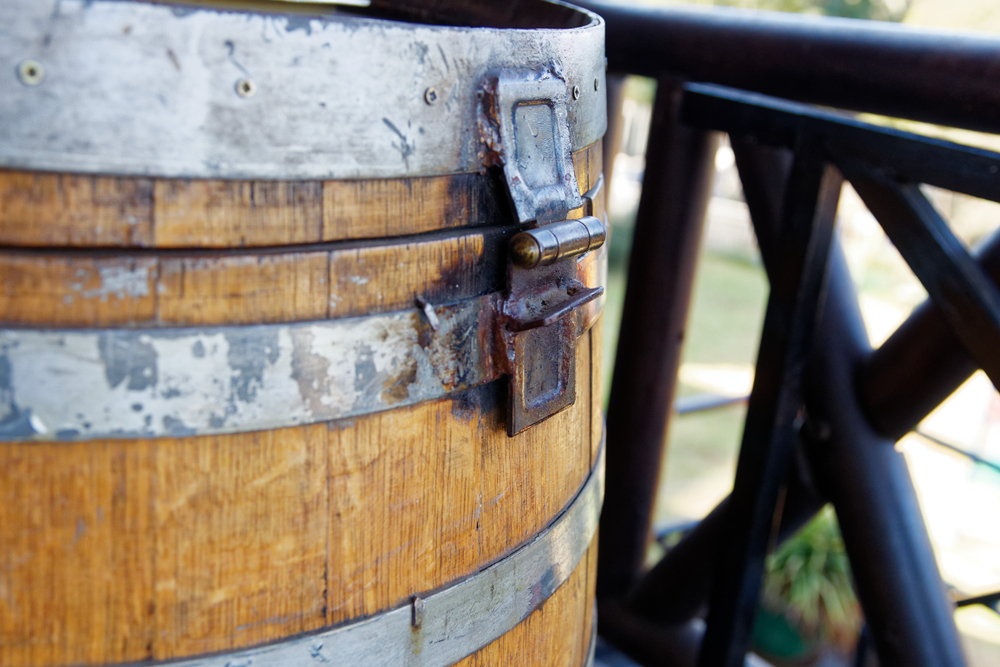
Also known as lift-off hinges, weld-on barrel hinges are sturdy hinges designed to be compact, solid, and visually pleasing for outdoor applications. They are typically made out of stainless steel, aluminum, or brass and are used for agricultural, electrical, and security purposes.
2. Bolt-On Hinge
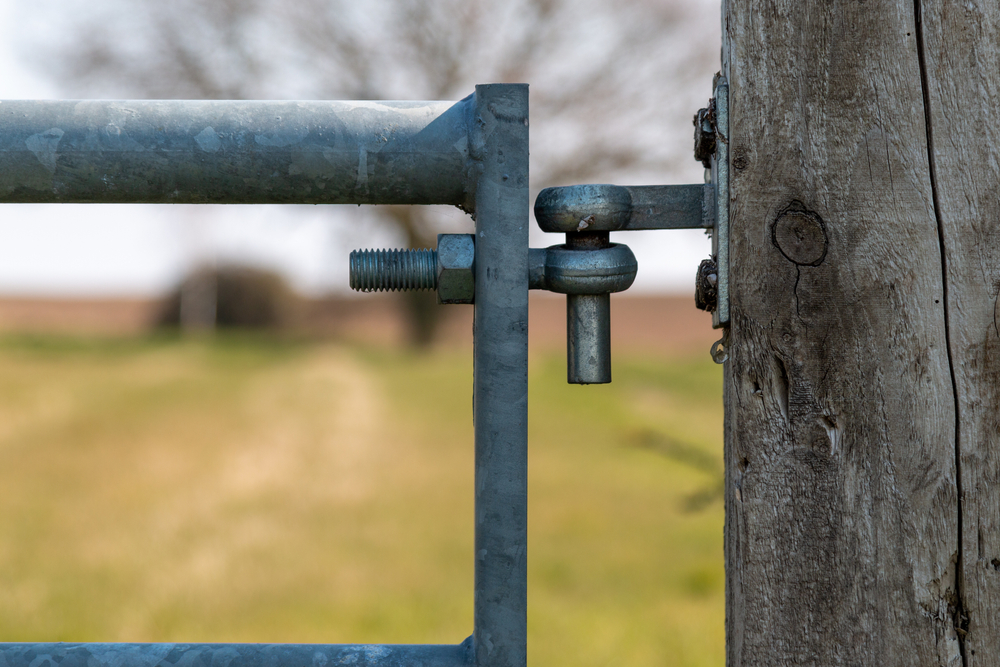
If you need to install a hinge on a heavy door, then a bolt-on hinge is your best bet. Also called a gate hinge, this type of hinge consists of a metal L-shaped bolt that is inserted into a barrel. This barrel is then attached to the gate with nuts and bolts.
Made for applications with heavy radial loads, like metal or hardwood gates, this type of hinge was designed to carry heavy loads of up to 500lb-1,000lb, depending on the size. They are durable and will survive the weather conditions easily, especially if maintained properly with a protector or lubricant like Boeshield T-9.
3. Butt Hinge
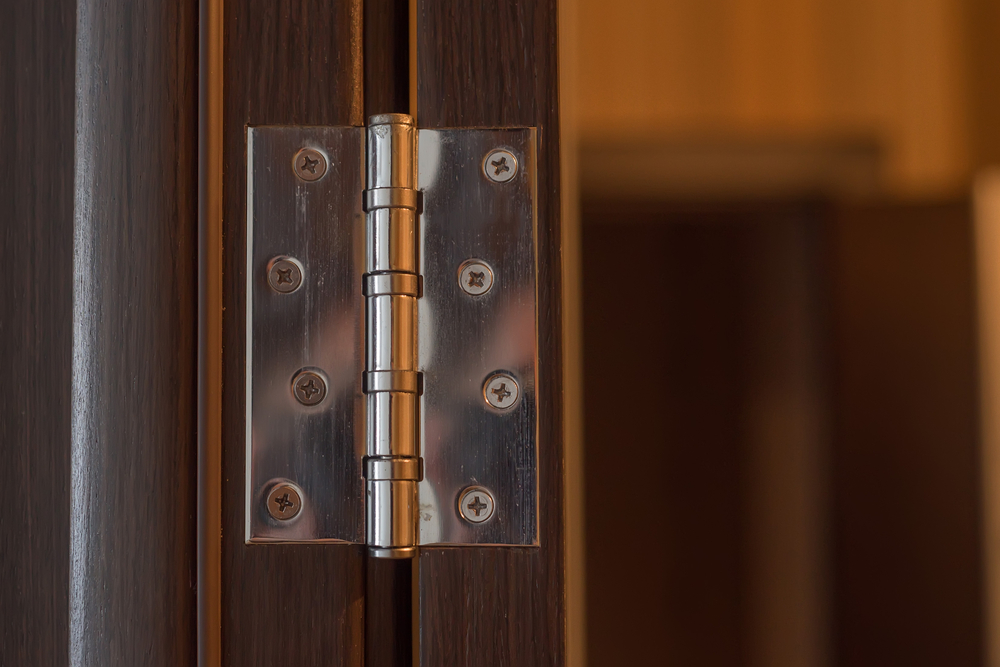
The butt hinge consists of two panels that are mortised into both the frame and the doors, joined by a pin that is often removable. It’s called the butt hinge because they are attached to abutting surfaces, which refer to surfaces that share the same border.
One of the most common types of hinges, it’s typically used in threes, or even fours, for frequently used entryways like the main doorways of residential homes. It’s usually made of steel or brass and is designed to withstand everyday use.
4. Heavy-Duty Concealed Hinge
Concealed hinges are self-closing hinges that have the advantage of being out of view. They’re often used in wooden cabinets or furniture so as not to detract from the view of the lovely wooden surface.
Heavy-duty concealed hinges, however, like the SOSS Invisible Hinges, are stronger and can carry the weight of the full door. This is ideal not only if you want to preserve the look of the main entryway to your home, but also for added protection. Unnoticeable from the outside, the heavy-duty concealed hinge has the added security of being tamper-proof.
That said, since they’re usually made from high-strength steel, they tend to be more expensive compared to other types of hinges.
5. Flush Hinge
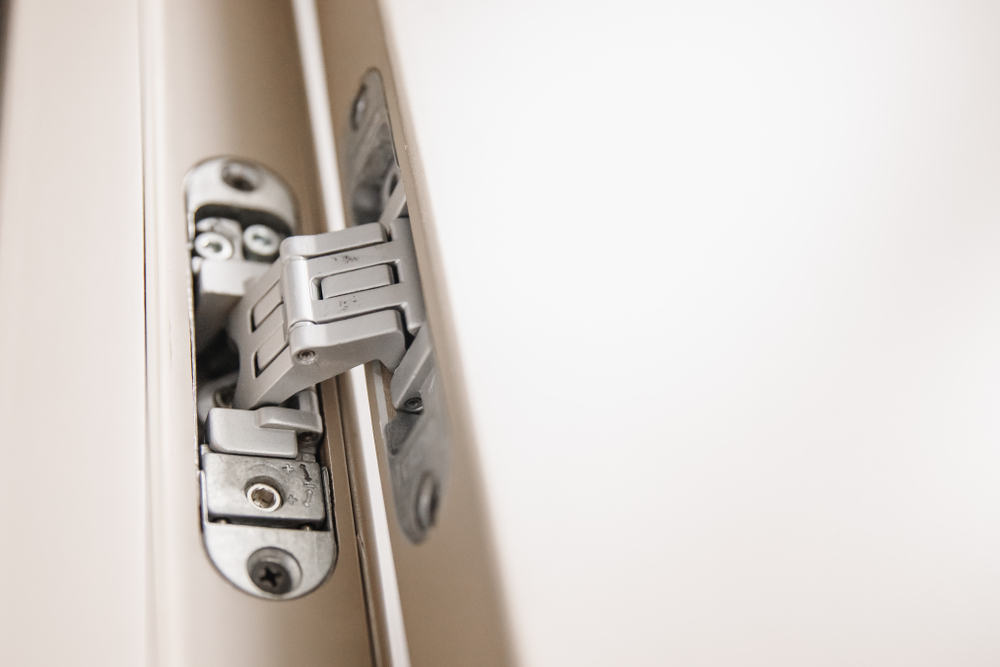
Doors that open into small rooms would benefit from flush hinges, as they were designed with space in mind. The steel panels that hold the door and the frame can press flush to each other, saving space. Even though they’re small and compact, they’re quite durable and can carry weights as long as they’re not too heavy.
For outdoor applications, flush hinges like the Voluka Non-Mortise Door Hinges can be used for furniture such as wooden storage boxes or sheds.
6. Piano Hinge
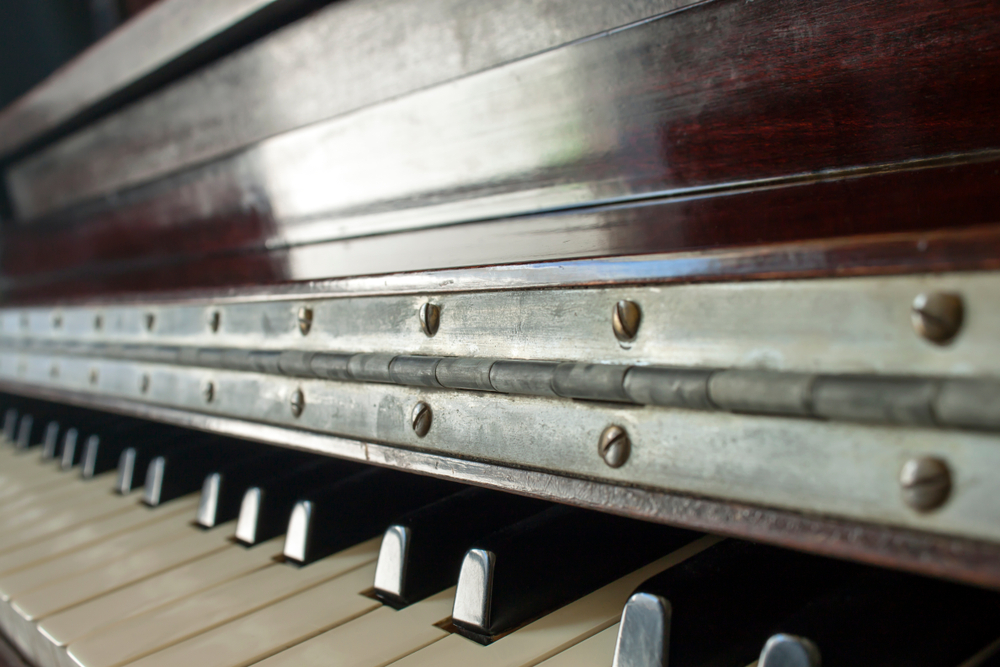
This type is a peculiar-looking one. The piano hinge is made specifically for the lids on grand pianos, which require a long, continuous hinge to hold the two parts together. The hinge itself consists of two, long plates joined together by a long rod.
Piano hinges are sturdy and can bear a lot of weight. While its main use is on piano lids, it’s also ideal for entryway doors that need to be extra sturdy. Because of its sheer length, it can be also very difficult to tamper with a piano hinge used for an outdoor application.
7. Offset Hinge
If you foresee the need to constantly carry large objects through the doors of your house, then an offset hinge will give you that much-needed, extra half-inch of space.
Offset hinges let the door swing away from the doorframe much farther than regular hinges do. This is useful for backdoors or storage sheds, where you may need to frequently put large items inside.
8. Olive Knuckle Hinge
With an added architectural and decorative element to its structure, the olive knuckle hinge is one of the more fancy-looking hinges on the list.
Instead of the typical rod, this hinge has two leaves joined by an oval, olive-shaped knuckle, hence the name. It’s partially concealed, with only the knuckle visible when the doors are closed.
The larger varieties are also sturdy and can hold up a lot of weight. Because of this, olive knuckle hinges are best used on grand entryways with a particular flair.
9. Overlay Hinge
Overlay hinges are the ideal choice if you want to achieve a clean effect, or if saving the least bit of space is essential. This type of hinge has two plates that fold into each other due to their special grooves, letting the door shut flush against the frame.
If you want to make a frameless cabinet or just a cabinet with no visible hinges, then this is a solid choice. It doesn’t add any thickness to the door and you can easily conceal it when installing it inside the cabinet.
10. Scissor Hinge
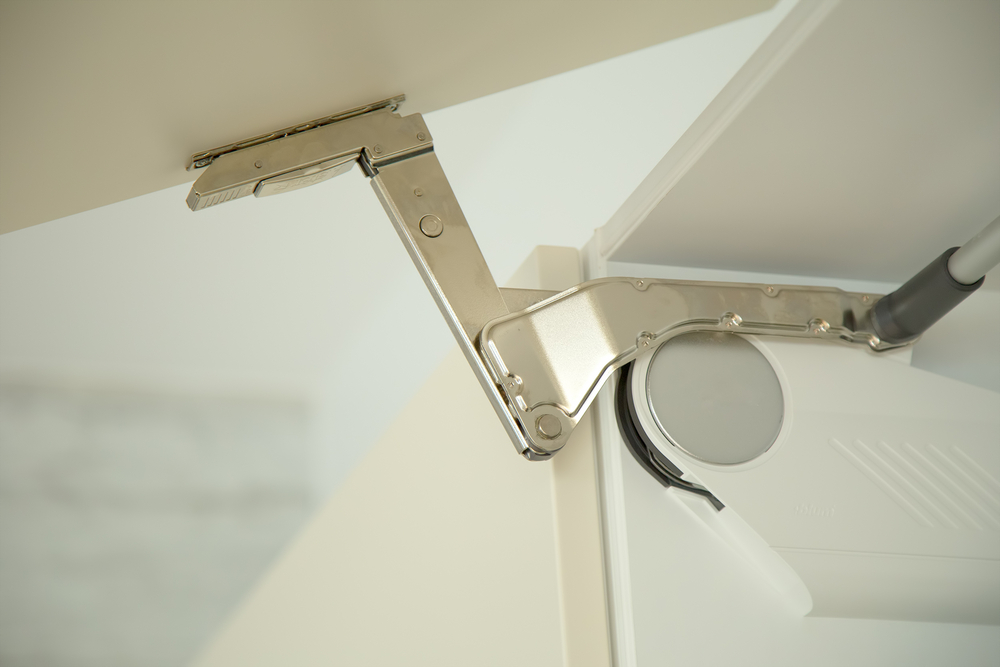
Scissor hinges, also known as pivot hinges, are a type of hinge that opens up or down instead of side to side. They open at a set angle, requiring pressure in order to close.
These hinges are perfect for kitchen cupboards, hardwood chests, tool chests, and equipment covers.
11. Spring-Loaded Hinge
The spring-loaded hinge is the umbrella term for a variety of spring-operated butt hinges.
The tension in the spring ensures that the door closes automatically when opened, making it ideal for frequently-used doors such as spring doors or public utility doors. Additionally, you can easily calibrate the tension of the hinges to your preference.
12. Strap Hinge
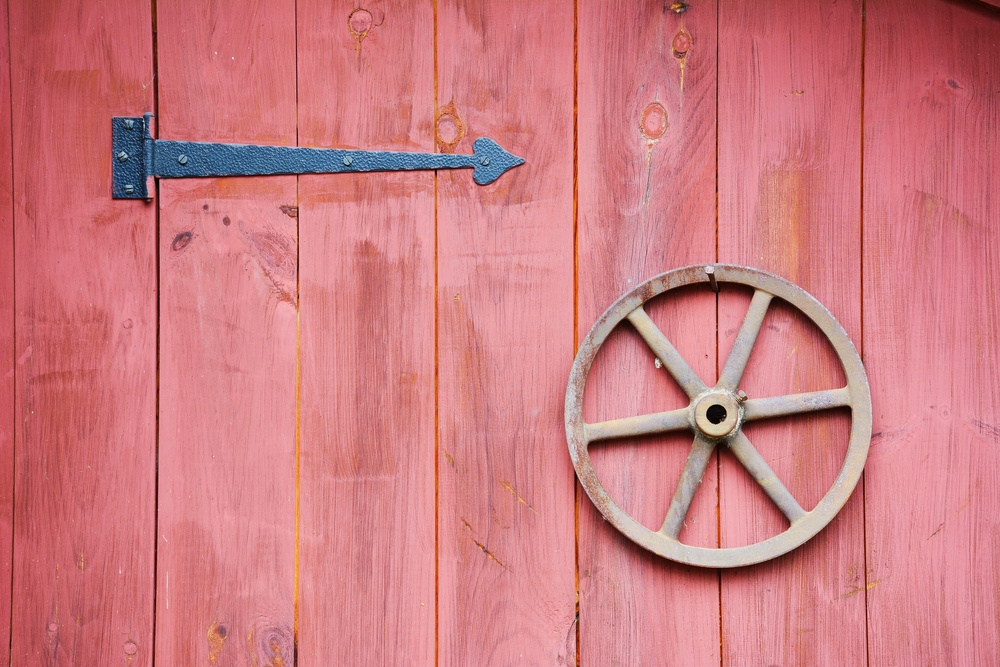
The strap hinge is one of the strongest types of hinges on the market. It’s typically used in front gates because it can withstand constant use as well as the elements, without looking too utilitarian.
It has a distinctive look, composed of two thick, typically triangular leaves and joined by a stout, sturdy pin. Some varieties of the strap hinge have one rectangular plate for the frame and a long, triangular one for the door. Others have decorative flourishes fashioned entirely to fit the owner’s preference.
Types of Interior Hinges
Typically used inside the home, interior hinges have decorative or architectural properties that add to the visual appeal of doors or furniture.
1. Bi-Fold Hinge
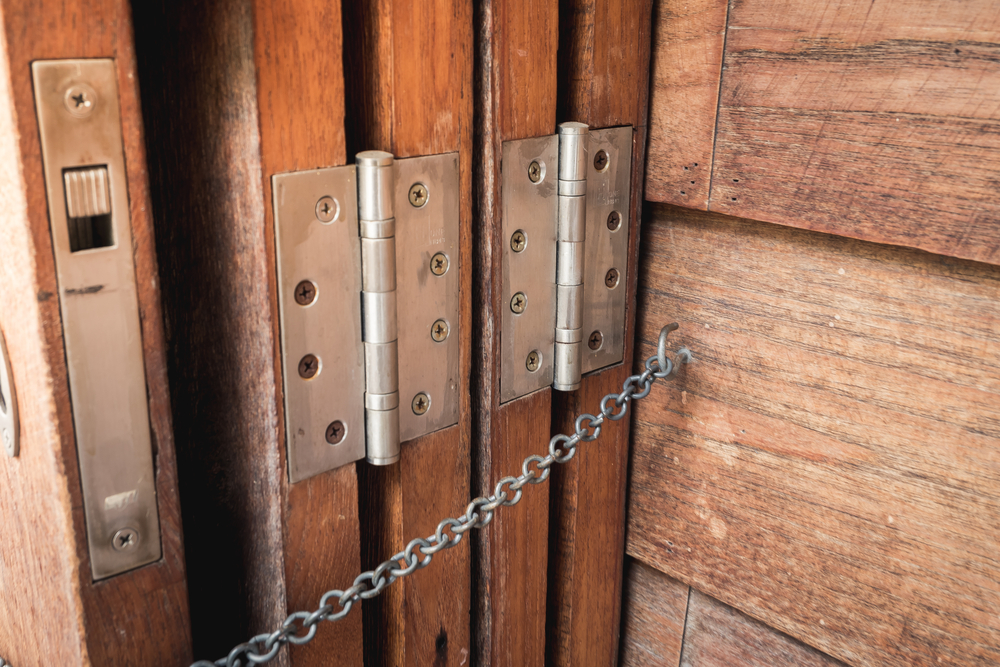
More uncommon than the other types, bi-fold hinges are composed of leaves of varying lengths and multiple pivot points. This special feature allows the objects they’re attached to to have a greater degree of travel.
With this function, you can create doors that essentially collapse into themselves. When applied correctly, bi-fold hinges provide a unique style while increasing the usable space. This characteristic makes bi-fold hinges ideal for indoor applications.
2. Butterfly Door Hinge
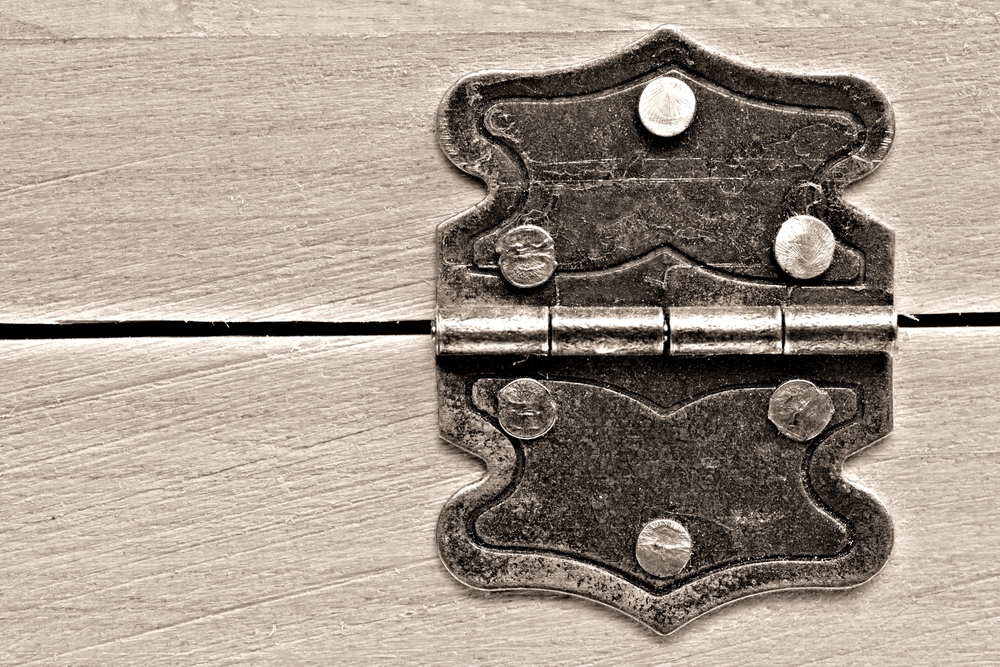
Although this type can’t support a lot of weight, butterfly door hinges have a decorative design that makes them a popular choice for lighter interior doors. This type of hinge is mounted on the surface of the door, making it fully visible and adding character in exchange for weight capacity.
Nevertheless, it’s still a fan-favorite because it comes in a lot of different varieties and can even be customized to fit your decorative preferences.
3. Double Action Spring Hinge
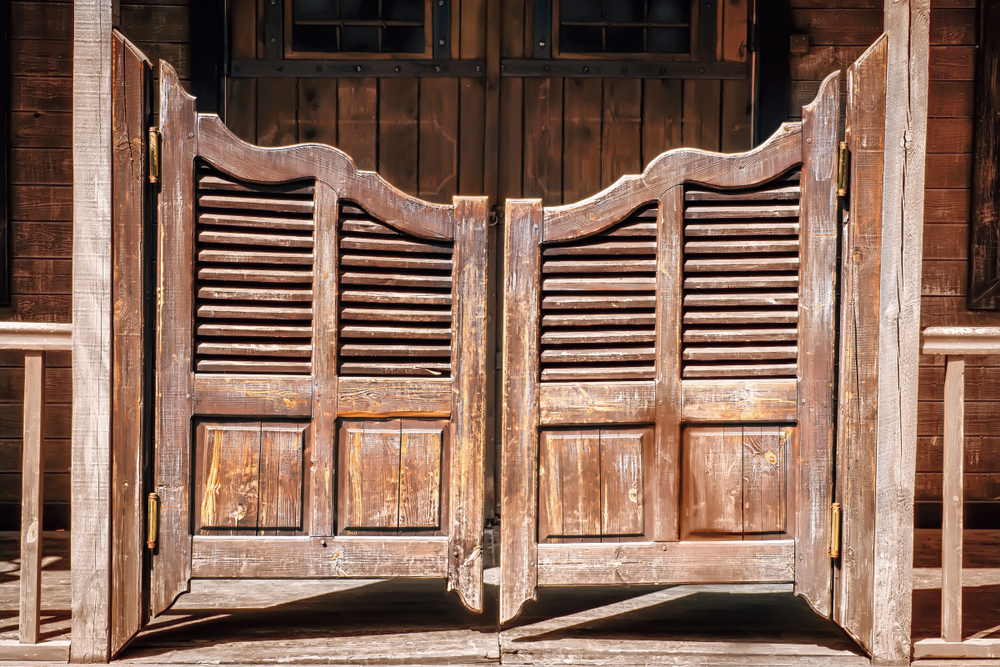
If you’ve ever seen a gun-toting cowboy enter a saloon in classic Western movies, then you know what double action spring hinges are. This type of hinge, seen frequently in those iconic swinging doors, can swing both ways as the door is pushed or pulled.
In modern times, this type of hinge is still often used in divisions between the kitchen and the dining room. Its only drawback is that it can’t carry heavy loads.
4. Flag Hinge
One of the more uncommon types of hinges on this list, the flag hinge is often used on light, plastic doors. Instead of load-bearing, it’s designed to be convenient and practical.
This hinge is composed of two half-leaves that rotate around a pin. You can easily disconnect the hinges from the pin, allowing you to completely remove the door just by pulling it up.
5. Invisible Hinge
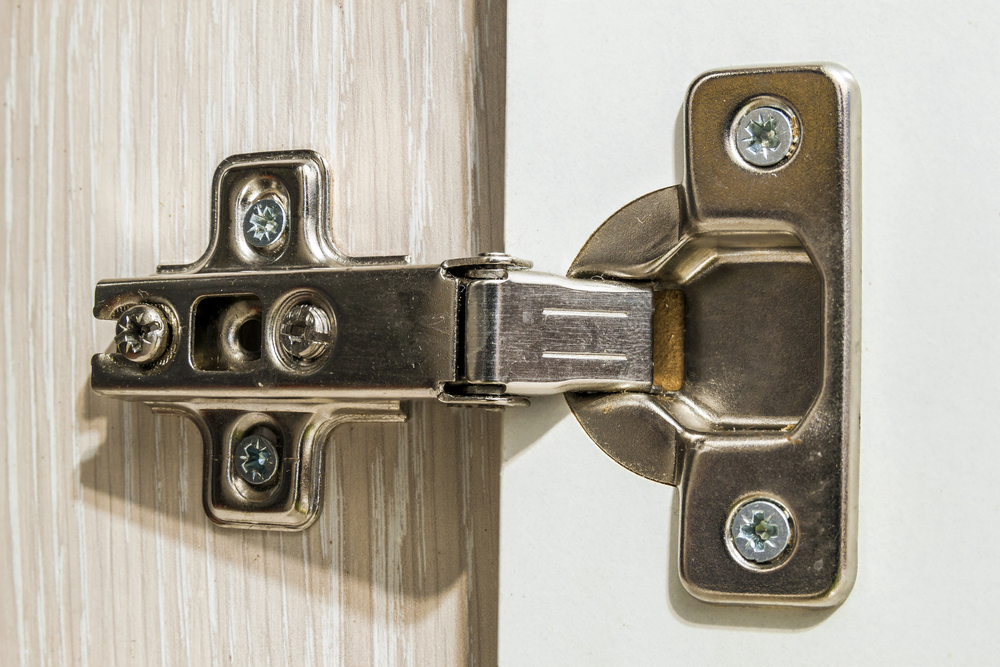
Also called a concealed hinge, the invisible hinge is the younger brother of the heavy-duty concealed hinge. This type is designed to be, as its name implies, invisible.
Invisible hinges are composed of a pivot and a bracket and are installed in a recess of a door. It’s mostly used in interior spaces to achieve a clean effect on light doors, as it can’t carry heavy loads.
6. Take-Apart Hinge
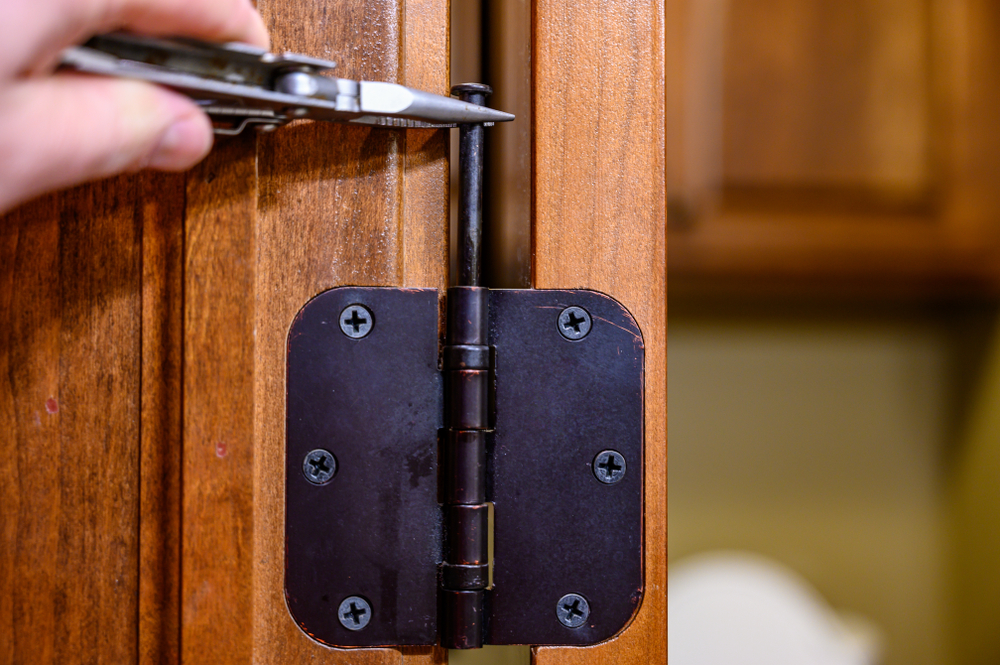
Somewhat like flag hinges in function but not in design, the take-apart hinge, as its name suggests, is designed to be easily disassembled. It has two separate leaves that you join with a pin. Removing the pin can separate the two parts and thus allow you to quickly disassemble the door.
This hinge is ideal if you foresee the need to frequently remove your doors. For instance, when you’re remodeling or renovating certain parts of your house.
To summarize, exterior hinges are often sturdy and are made to carry a lot of weight, withstand daily wear and tear, and resist the effects of the elements. Interior hinges, meanwhile, are not as sturdy and are more focused on achieving a decorative effect.
Choosing the Right Types of Hinges
You’re now well-versed in the most common hinges around! Remember, the right type of hinges is essential for the right type of projects.
At best, choosing wrong will cost you a few unnecessary bucks. At worst, your door could get ruined because the hinge you picked isn’t the right choice for it. This wastes a lot of time, money, and effort. But with the right hinge, your project will last and be beautiful to look at, to boot!
